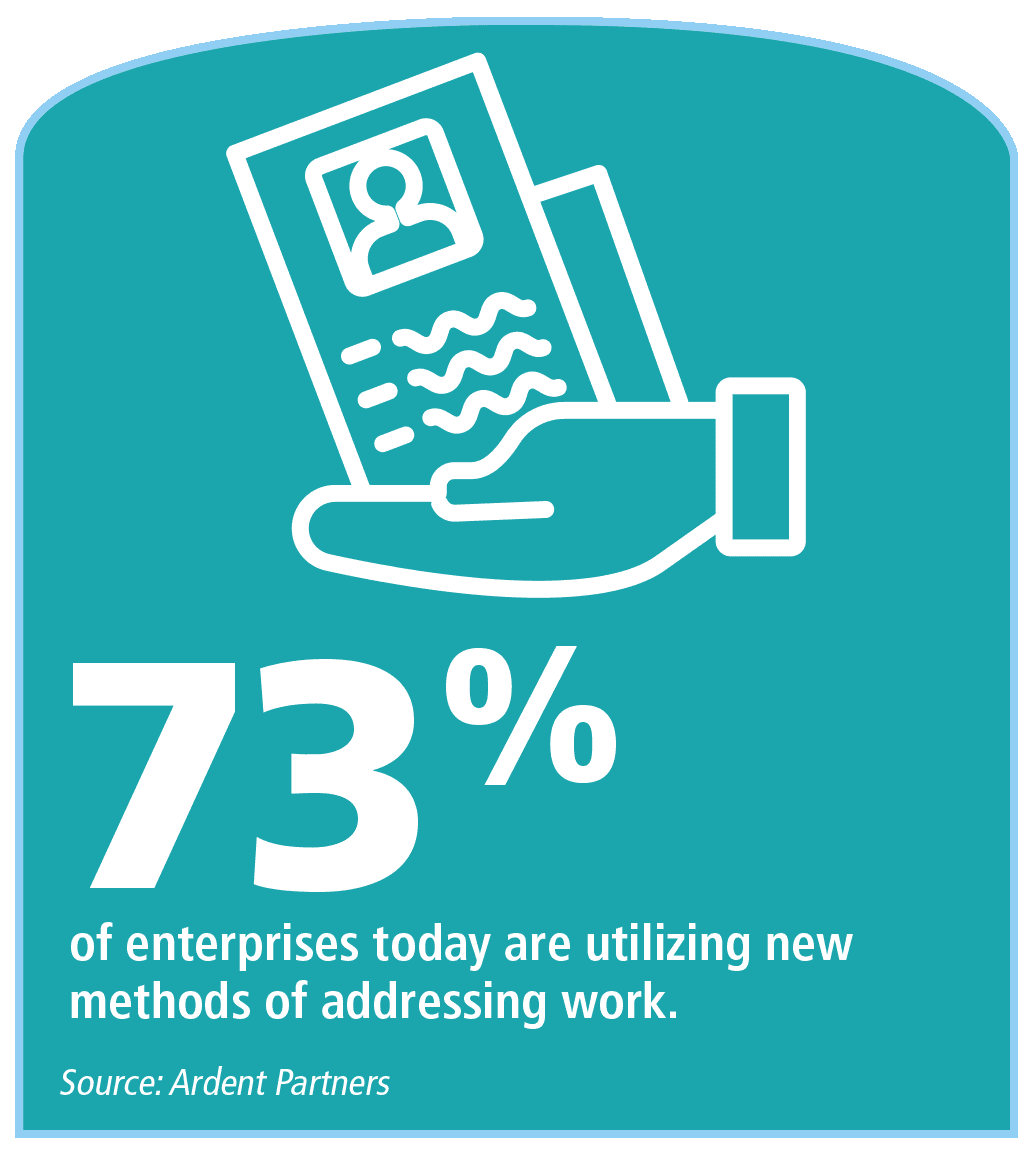A total workforce solution ensures organizations have the absolute best candidates no matter the talent type.
By Debbie Bolla
Global economic forces are driving companies to rethink how they approach their talent management processes. Low unemployment rates coupled with a skills shortage are creating a competitive talent environment in which organizations need to take advantage of every opportunity in order to succeed. As such, Ardent Partners finds that 73 percent of enterprises today are utilizing new methods of addressing work.
“Organizations need to transform their thinking from workforce planning to workforce design,” says Andrew Grant, global vice president for Allegis Global Solutions. Workforce design allows organizations to understand how each role impacts the bottom line and the best way it can be achieved.
 “Workforce design is a paradigm shift and challenging hiring leaders to be more strategic,” he says. “It enables a breakdown of the current workforce and a competitive analysis to support an optimal mix of all talent categories by geographies and that’s a game changer.”
“Workforce design is a paradigm shift and challenging hiring leaders to be more strategic,” he says. “It enables a breakdown of the current workforce and a competitive analysis to support an optimal mix of all talent categories by geographies and that’s a game changer.”
Having a holistic view of talent -one gained from a total workforce solution -is essential to the process. Rather than executing through a silo’d approach to talent with HR overseeing full-time employees and procurement handling contingent workers, a total workforce solution combines the management of all talent types under a single umbrella. “This gives visibility for the right blend of workers,” he explains.
The data and visibility of a total workforce solution also provides insight so organizations can make the best hiring decisions possible.
“We are looking at the work that needs to get done -not just trying to fill a req,” Grant says. He recommends when analyzing each role for optimal workforce design, organizations should consider:
- The right category of worker: Does the position require the historical knowledge of a full-time employee? Is this a short-term project better suited for a freelancer? Is the expertise of a SOW needed?
- Where the work is done: At headquarters? Is a premium necessary to reach talent in major cities? Can it be performed remotely? Can it be outsourced to Eastern Europe?
Once this is mapped out, Grant suggests leveraging an omni-channel sourcing and engagement strategy with candidates. “This is critical for a modern integrated approach to allow for marketing, targeting, and segmentation of talent pools,” he says. It will also maximize brand messages and promote a strong employee value proposition. Partnering with talent advisors organizations that understand the business and industry is also essential for total talent strategy.
Technology also plays an integral role. Grant says that Allegis offers a solution -HiringSolved -that aggregates data from any source, including a vendor management system, applicant tracking system, a customer relationship management tool, a human resources information system, and a learning and development tool. It pools the multi-source data into one place and allows organizations to rank individuals for each open role based on skills, knowledge, and experience. Organizations leveraging the platform are seeing impressive results: a 19 percent drop in time-to-fill on open reqs while decreasing the required recruiting headcount needed to make those hires by 17 percent.
“Having visibility to right data across entire workforce is a critical piece,” says Grant. “Organizations will not be able to achieve optimal workforce design if they don’t understand the data in real-time.”














